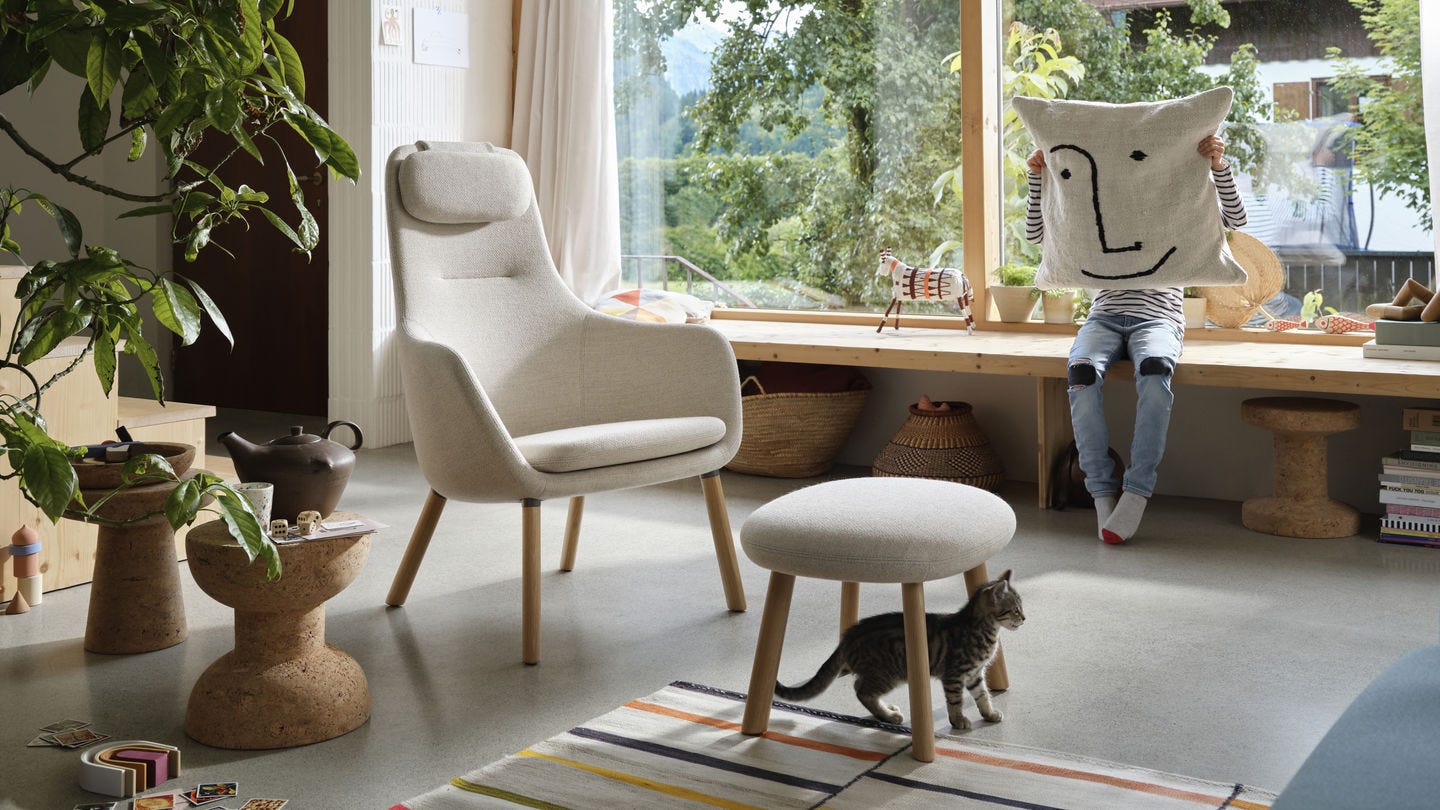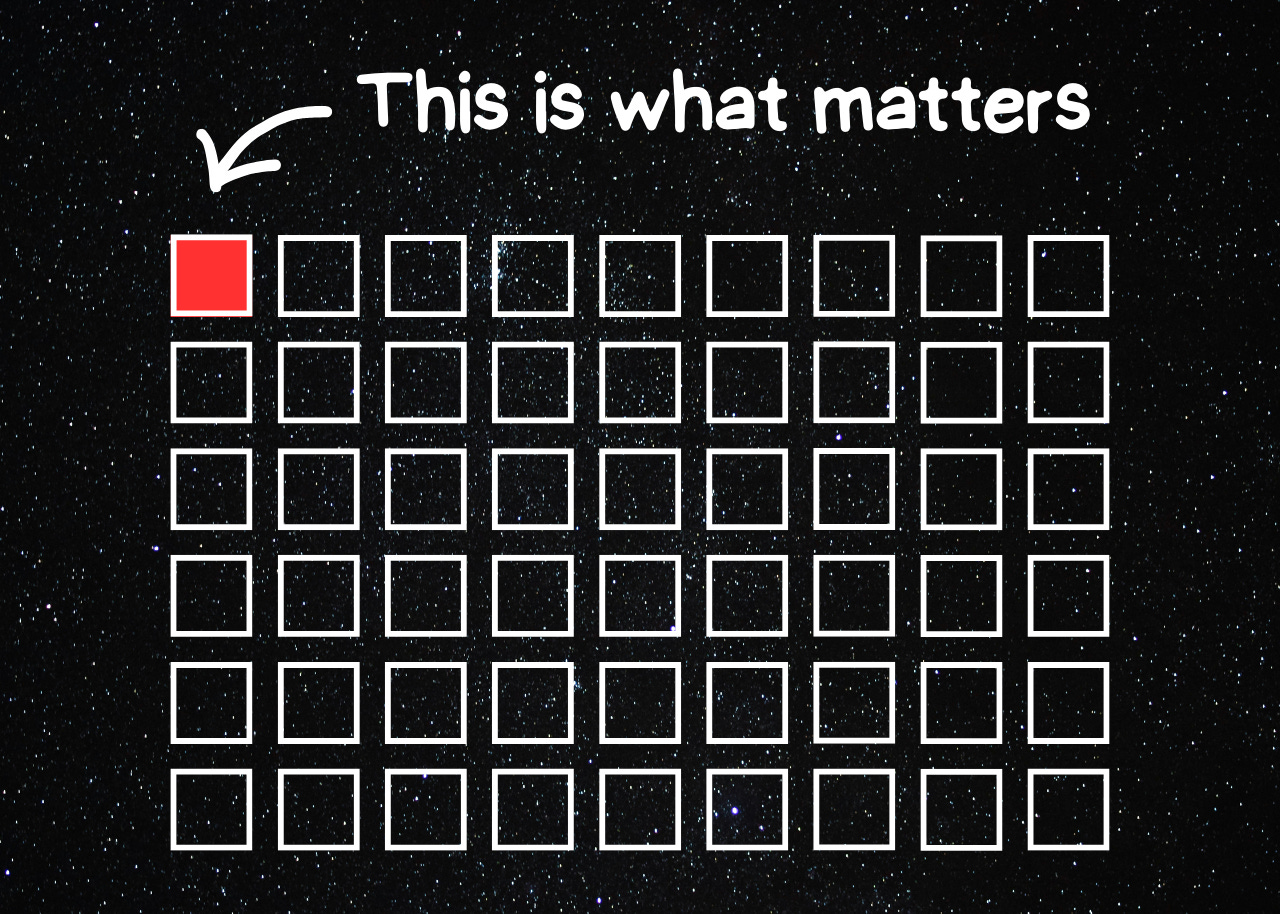In search of the essential
There are too many targets and too few arrows
🏷️ Categories: Decision making and biases, Minimalism
What is a chair for?
You might think this is a ridiculous question. Obviously, a chair is for sitting, everyone knows that. This seemingly naive question jumped out at me while I was reading the biography of an object designer. There is much more to the question than meets the eye and it made me reflect on my own life.
Sit back and you will see why something so trivial can change your mindset.
Jasper Morrison, a renowned British designer, noticed something that the other top designers in the industry were overlooking.
As in any industry, designers watch their competitors to see how they are doing. Everyone was comparing themselves to the other top designers, everyone except Jasper. Jasper saw that often, discrete and simple objects made by generic brands and anonymous designers were superior in usability and durability to those made by prestigious designers (Morrison, 2006).
Jasper realized that most designers were falling under the law of the hammer and were unwittingly paying too much attention to aesthetic issues and not to achieving functional and durable designs.
This brings us to the initial naive question.
What is a chair for?

Jasper's approach focused on the essentials: the object was great if it served its purpose, was pleasant to use and durable, the rest was dispensable.
I would say this mindset is equally important outside the world of design.
Focusing on the essentials is sometimes difficult.
For example, as a writer, I could spend days working on improving the design of my website, editing the logo, or thinking about whether it's better to publish my texts at 7 a.m. or 6 p.m. All of these have their place, and of course they matter, but they will never be my priority tasks for the day.
Instead, it would be better to spend my time on the essentials: writing three letters a week of the highest quality possible.
Without that, everything else is meaningless.
Avoid deviating from the essentials
According to Pareto's Law, putting in little effort but focusing on the essentials produces much greater progress than putting a lot of effort into secondary matters.
If you are thinking about starting an exercise routine, but you are worrying about the perfect clothes or the ideal equipment to train at home, then you are focusing on secondary details. The key is to exercise consistently. No one who is starting out needs high-performance sportswear or equipment as good or better than that of a gym.
If you are writing a book and you are obsessed with the cover design or finding the perfect title, you are losing sight of the most important thing: writing the content. An attractive design and an impressive title are important, but without good content, those details will not have the same effect. Focus on the quality of the content first and then on the secondary aspects.
If you are learning a new language and you are excessively worried about memorizing vocabulary or grammar without context, you are concentrating on minor details. Exercises are important, but practicing daily with natives is what really matters to achieve fluency. There will be time to polish mistakes and improve sentence structure later.
As with designers, the most important work is the work that produces progress. Sometimes it's not a question of resources, but of identifying what matters.
There is too much noise
Noise, that's what stops us from focusing on what really matters.
In the image above there were 54 squares and it was easy to see what matters, but in real life there are about 54,000 squares to decide between and that's when analysis paralysis happens. There is too much information, options and points of view to just nail down what really matters and leave the trivial behind.
Sometimes I feel like that.
Turn down all that noise and listen to yourself.
Don't overwhelm yourself with too many options, go back to the basics and ask yourself the initial question. How to be a better writer? I ask myself. Surely having a nicer design and a better logo will attract more readers, but what will surely attract more readers is worrying every day about writing content that brings them value.
There are too many aspects to improve, but very few will have a great impact.
It is not necessary to make the simple complex.
I ask you again
What is a chair for?

I actually like that chair, but unfortunately, I can't sit on it.
✍️ It's your turn: Do you have trouble getting to the essentials and end up getting sidetracked? What do you do to avoid getting lost in so much noise and to know how to prioritize?
💭 Quote of the day: "It was simple in its design, and proclaimed its worth by its essence alone and not by pompous ornamentation, as all good things should do." O. Henry, The Gift of the Magi.
We'll keep in touch, take care 👋.
References 📚
Howlin J. (2018, 13 agosto). almostarts. Tumblr. https://almostarts.tumblr.com/post/176937195734/cactus-chair-by-jan-howlin
Morrison, J. (2021). HAL Lounge Chair & Ottoman. Vitra. https://static.vitra.com/media/asset/5642963/storage/v_fullbleed_1440x/61548521.jpg
Morrison, J. (2006). Super normal. https://jaspermorrison.com/exhibitions/2000-2009/super-normal
Pareto, V. (1971). Manual of Political Economy. New York : A. M. Kelley. ISBN 978-0-678-00881-2






I love this! It’s so easy to get distracted
so good, alvaro! thank you very much! j.